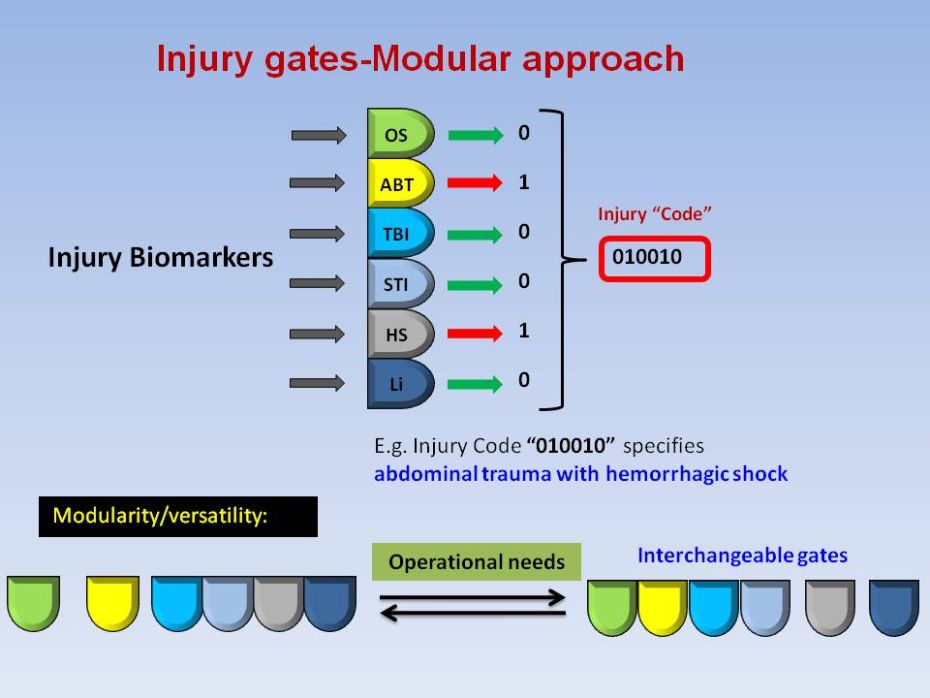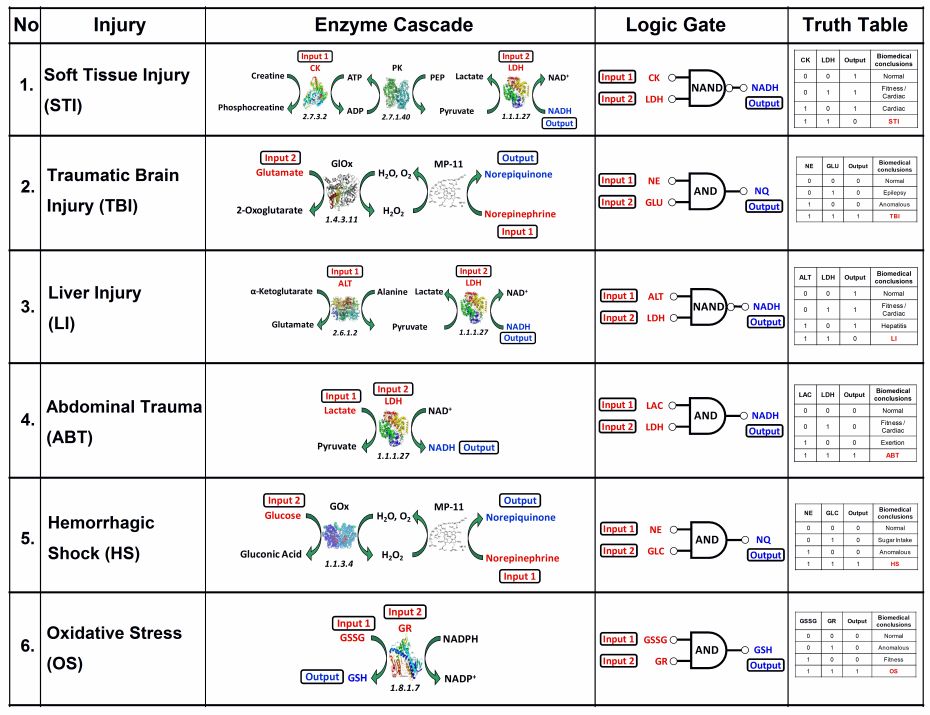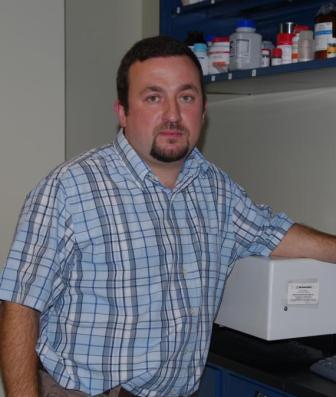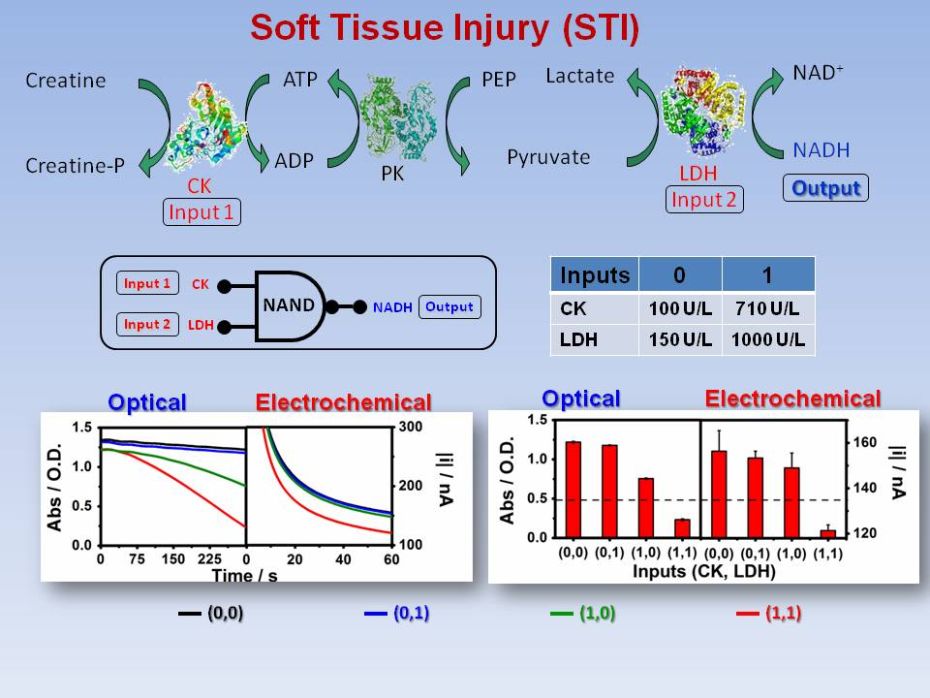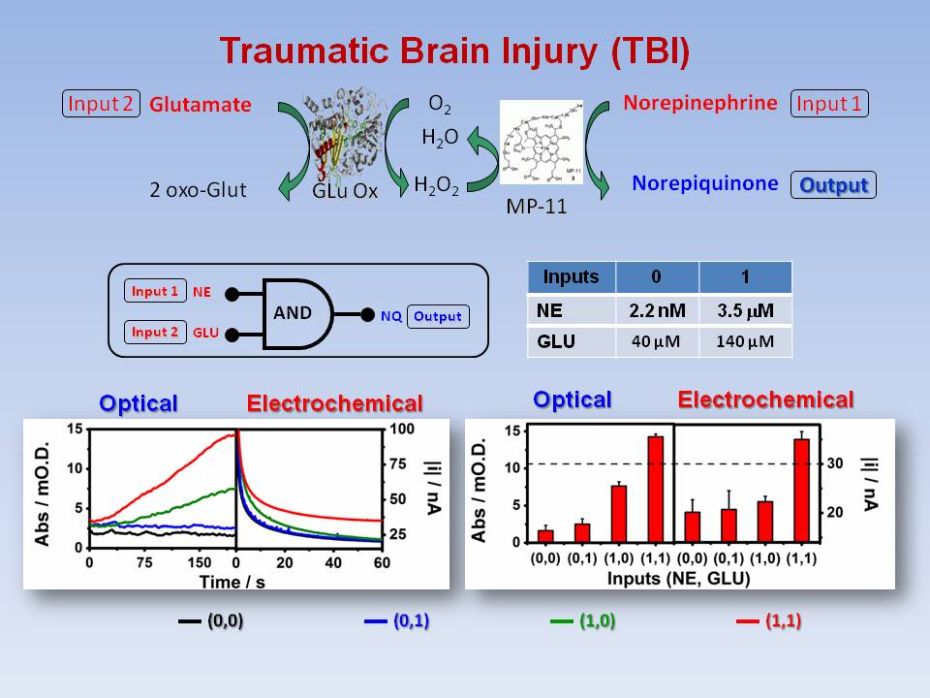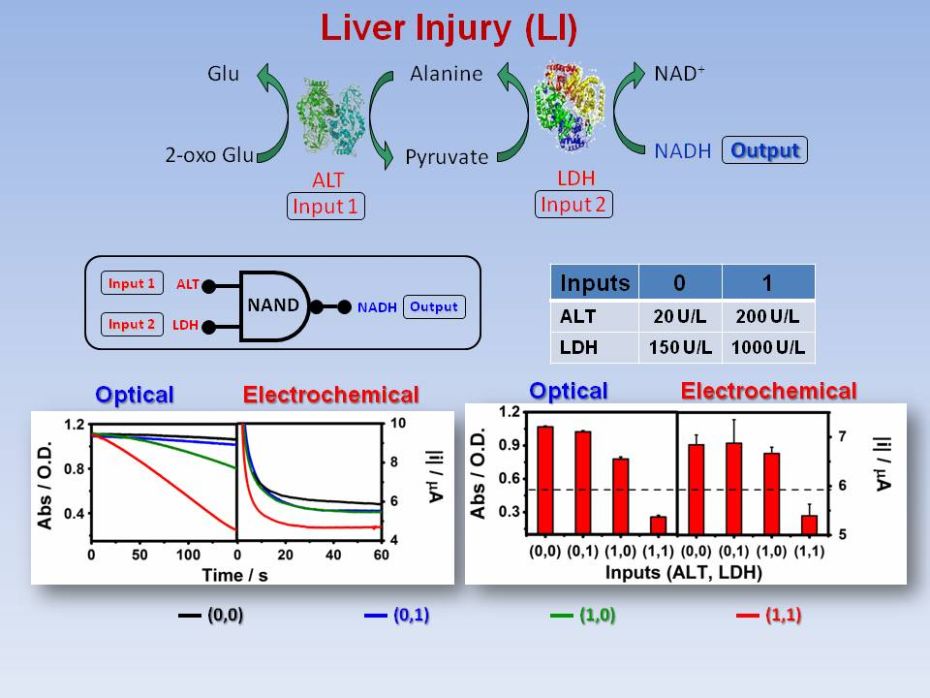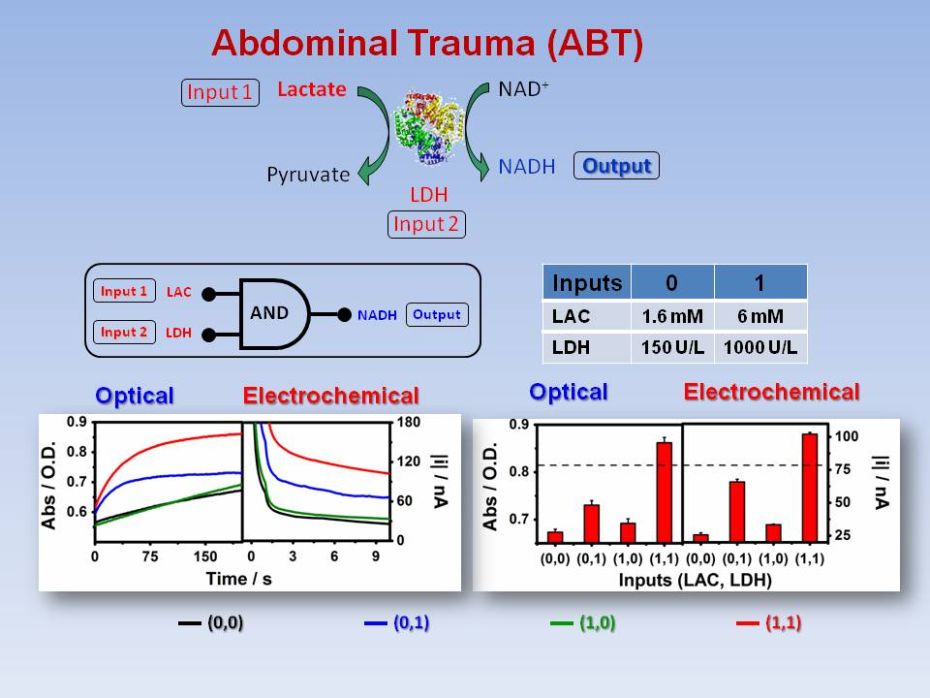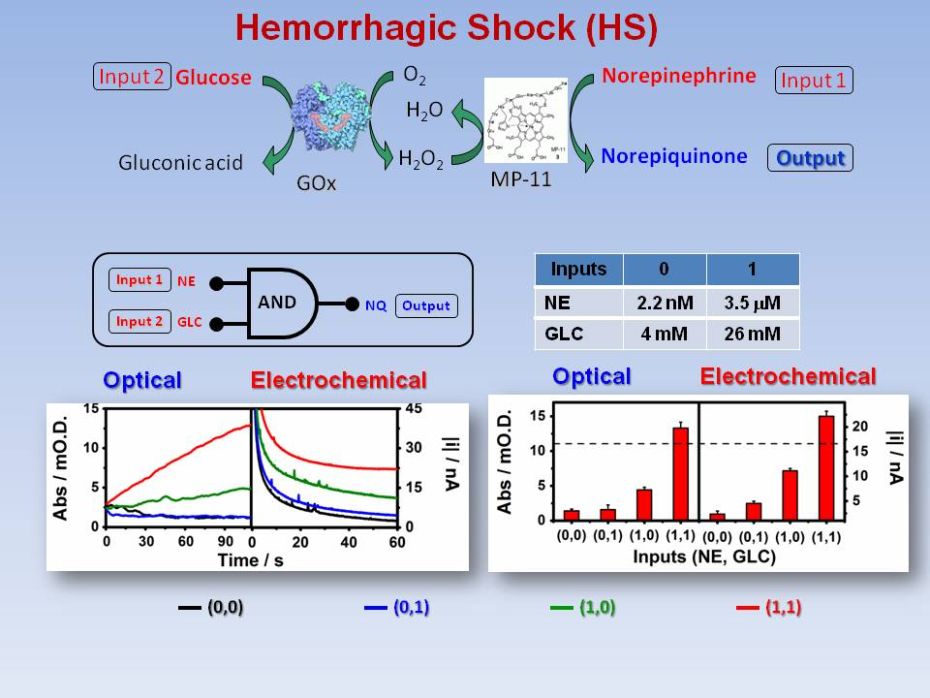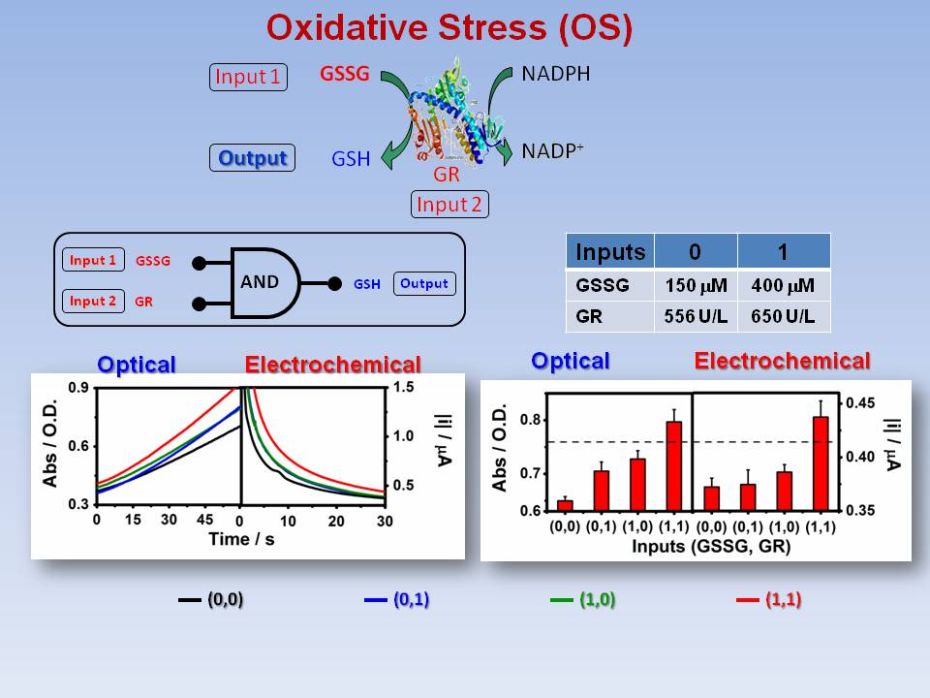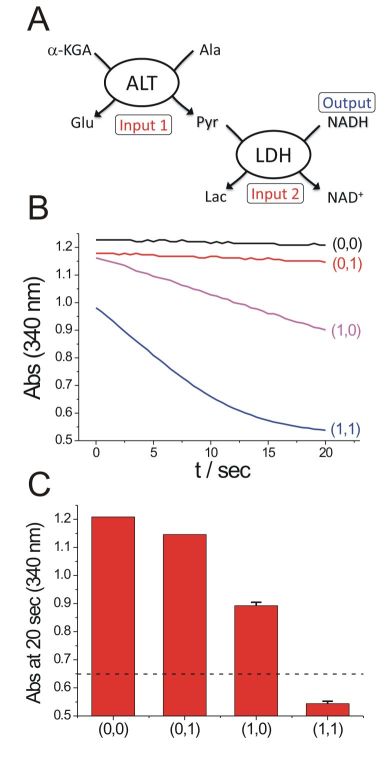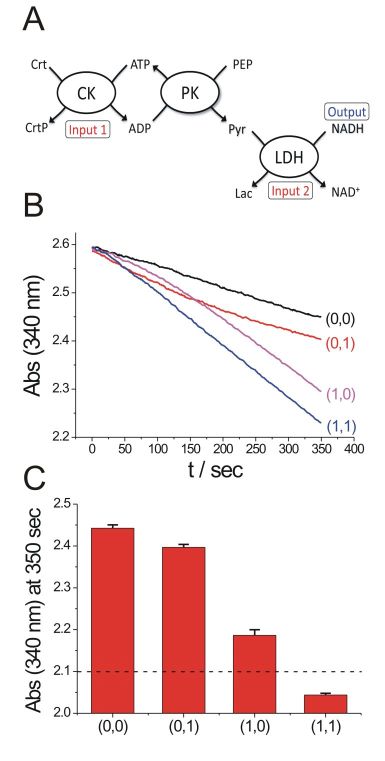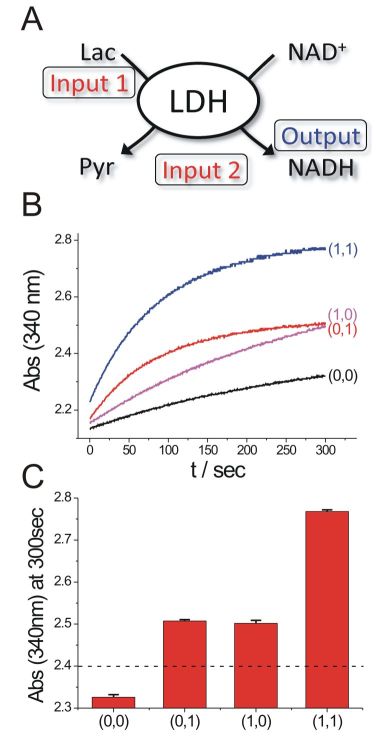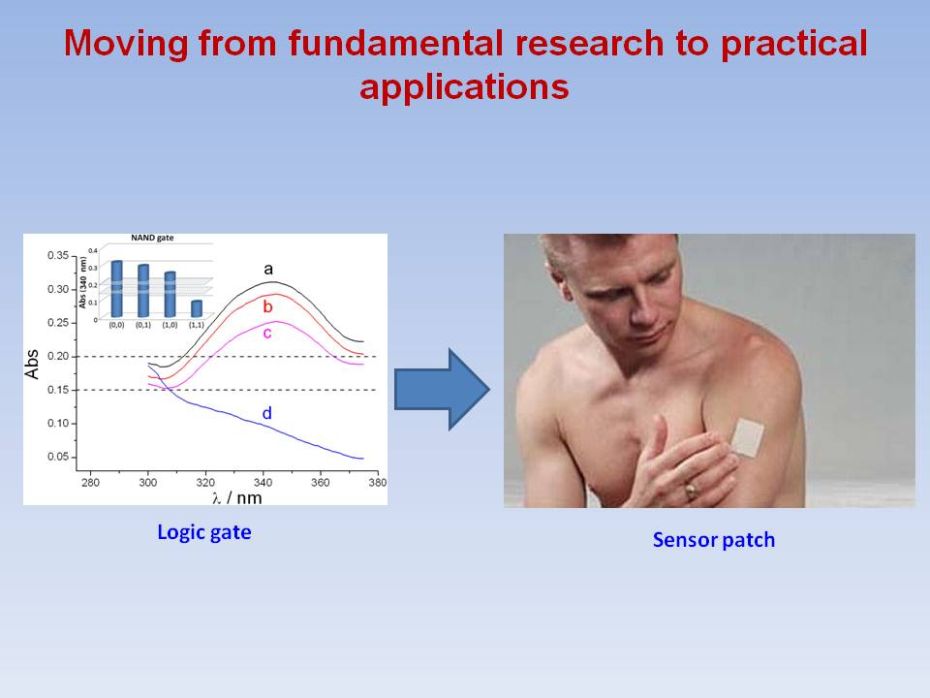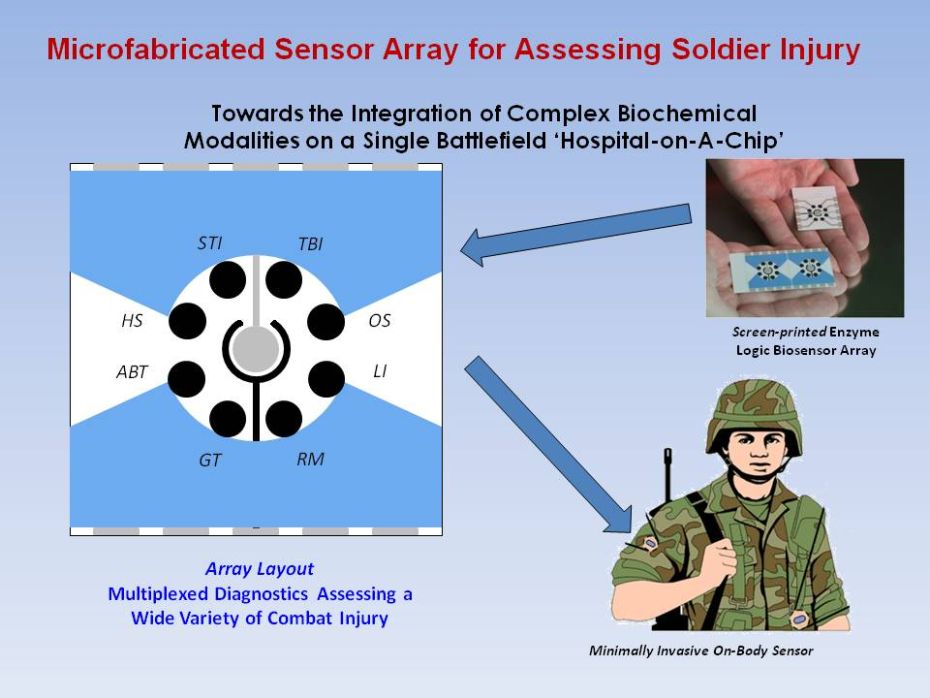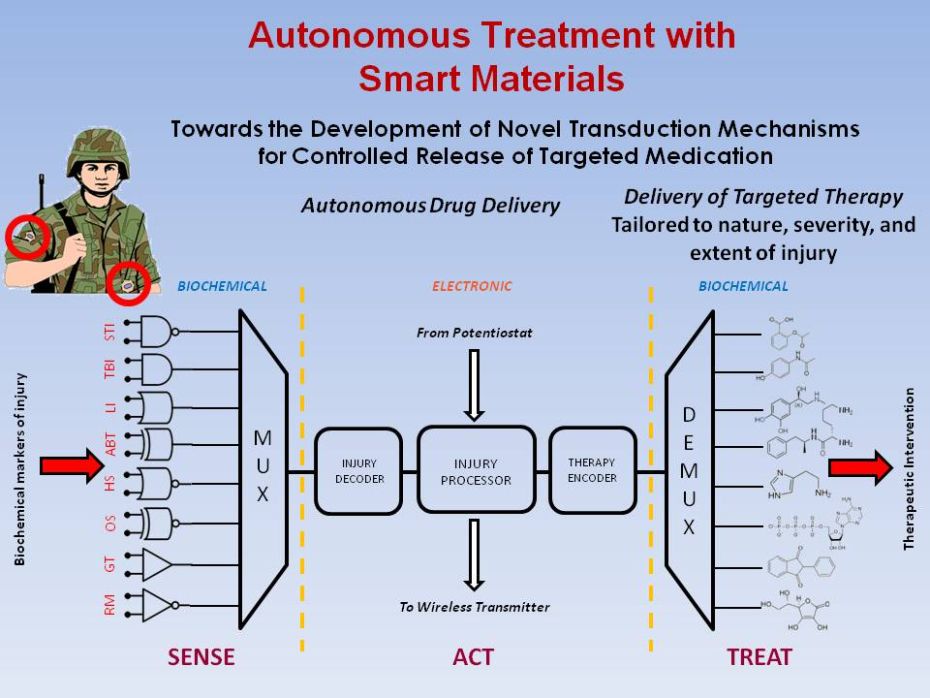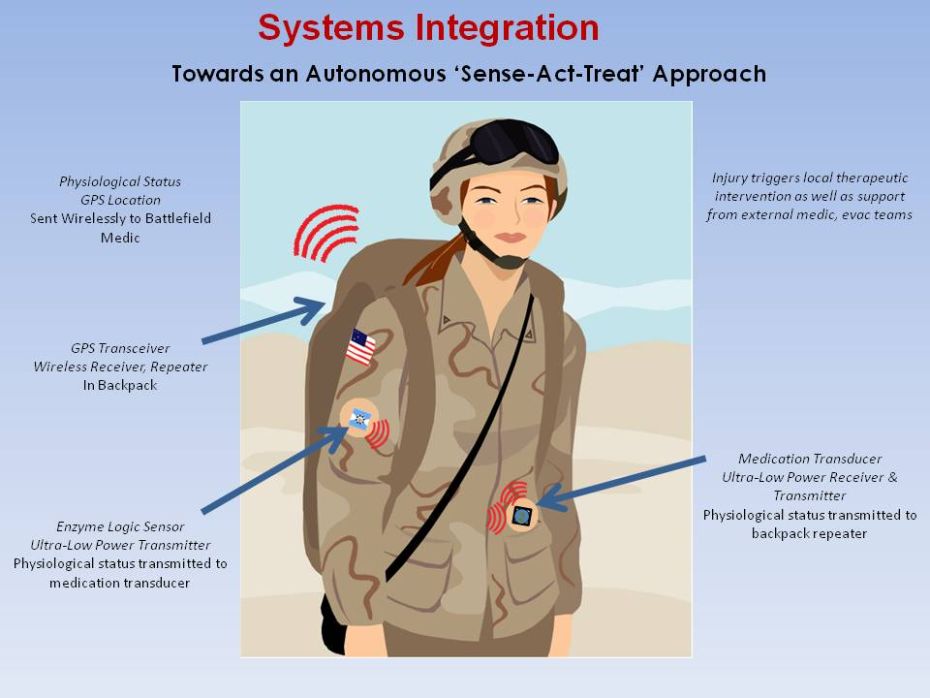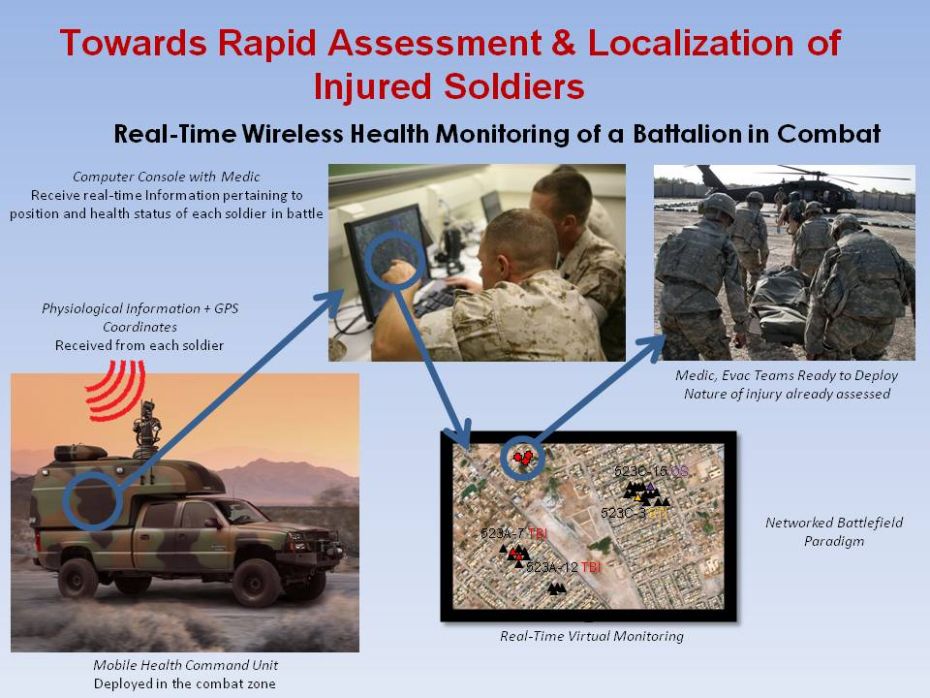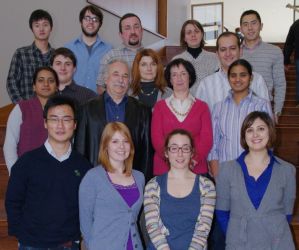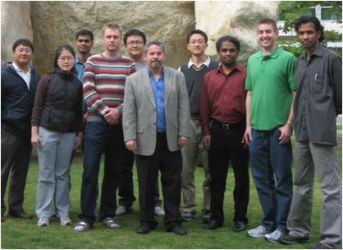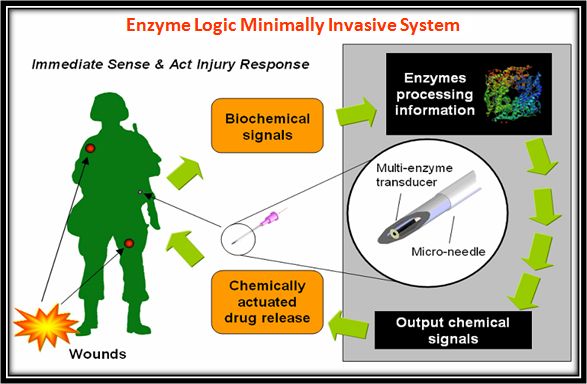
Background: Since the majority
of battlefield deaths occur within the first 30 minutes after
injury, rapid diagnosis and treatment are crucial for enhancing
the soldier survival rate. Different types battlefield injuries
require different therapeutic interventions. Integrated
autonomous medical feedback systems hold great promise for improving
the diagnosis and treatment of injured soldiers. The ‘Sense and Act’
feedback-loop approach is currently being used for the management of
diabetes in connection to electrochemical glucose sensors and
insulin-delivery pumps.
Objective: The goal of this
collaborative activity is to develop next-generation ‘sense and treat’
autonomous devices for enhancing the survival rate of injured soldiers
in battlefield settings. Our objective is to carefully design and
critically test an enzyme-logic sensing system for providing reliable
assessment of the overall physiological condition during an injury and
initiating an optimal and timely self treatment through interface with
stimuli-responsive drug delivery actuators or a RF-connected
drug-delivery patch.
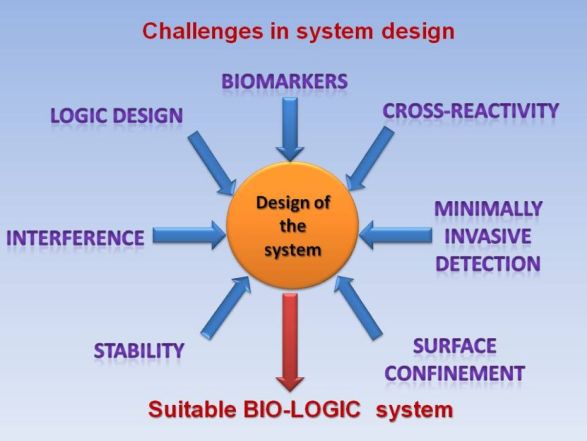
Basic Concept of Enzyme-Logic Diagnostics
Enzyme logic systems comprised of several
concatenated logic gates operating in a concerted manner are capable of
processing the biochemical information received in the form of various
combinations of chemical signals according to the principles of Boolean
logic. Multiple inputs
(markers) thus trigger a cascade of enzymatic reactions. Integration of
biocomputing elements with sensing processes would allow multi-signal
analysis followed by biochemical processing of the data, giving the
final answer regarding the physiological conditions of a patient in a
digital (“YES” or “NO”) format.
Review papers:
J. Wang, E. Katz, Digital biosensors with built-in logic for biomedical applications. Israel Journal of Chemistry 2011, 51, 141-150
J. Wang, E. Katz, Digital biosensors with built-in logic for biomedical applications – Biosensors based on biocomputing concept. Anal. Bioanal. Chem. 2010, 398, 1591-1603.

